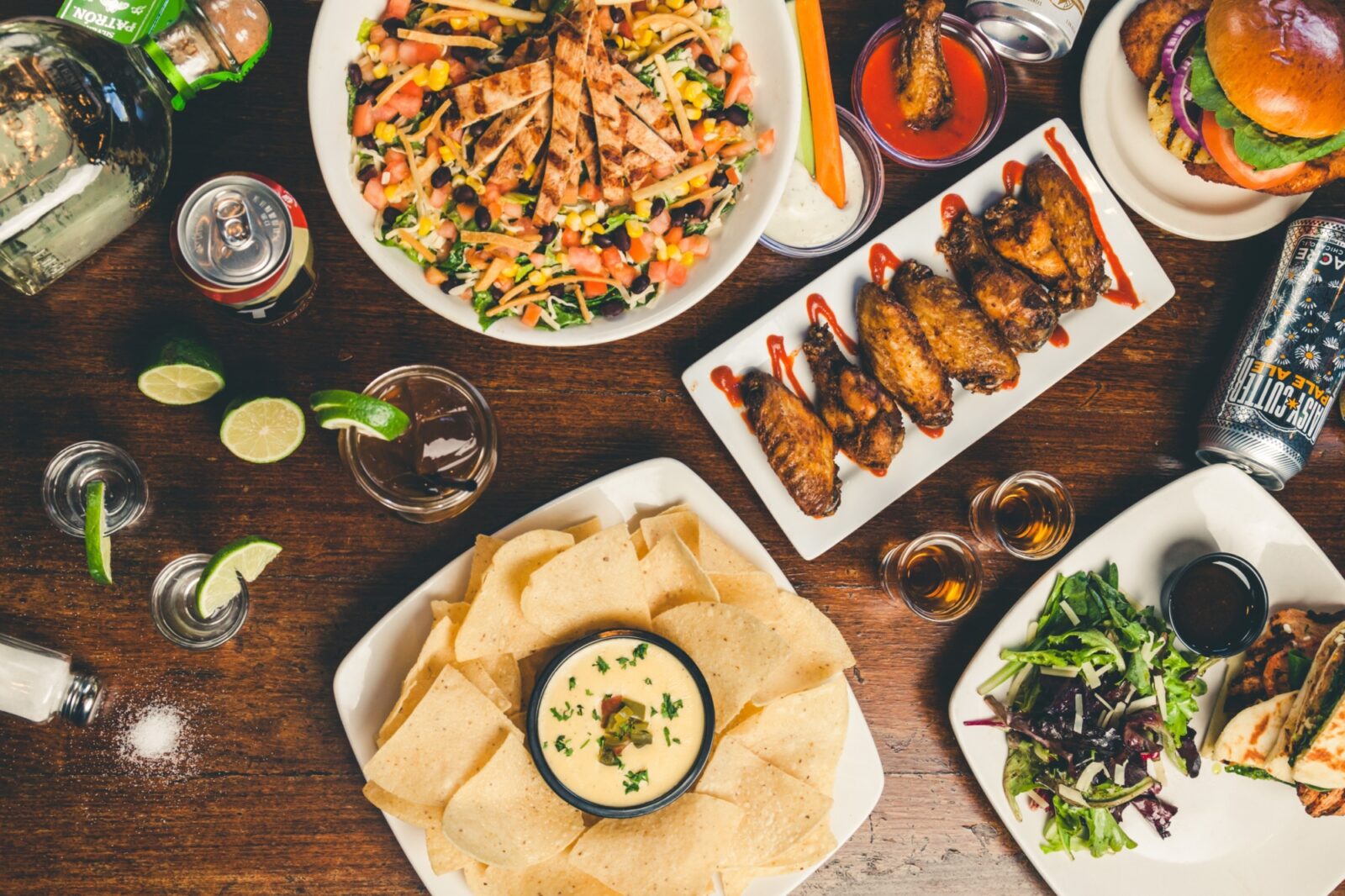
Unravel the Restaurant Supply Chain and Forecast 2024 Prices
Restaurant operators (of all sizes) can help protect and encourage menu profitability by being vigilant with food supply chain trends and adapting to ingredient price fluctuations.

Justin GuinnAuthor


Restaurant Operator Insights Report
See insights from real restaurant operators which can help you benchmark your current and planned restaurant technology stack against your peers as we head into 2024 and beyond.
It’s been a turbulent few years for the restaurant supply chain. Food prices, disruptions in raw materials, labor shortages have all contributed to a shaky restaurant food supply.
The restaurant industry is susceptible to global and regional food supply chains — though restaurateurs and their restaurant operations can and must mitigate this susceptibility.
Tactics for protecting the bottom line from supply challenges include strategic menu pricing, precise food cost measures, dynamic procurement plans, and more.
In this article, you will learn what makes up the restaurant supply chain, risks to the restaurant food supply, and tips for optimal restaurant supply chain management tactics and tools.
Where do most restaurants get their food?
Most restaurants work across one or multiple wholesale food suppliers to get the ingredients and products required for their menu items.
What is the supply chain of a restaurant?
The restaurant supply chain refers to all stakeholders invested in getting raw and processed ingredients to restaurants — including farmers, ranchers, manufacturers, distributors, retailers, and operators.
How is the supply chain affecting restaurants?
Restaurants are subject to the global food supply chain — meaning any macro or regional shortages, over supplies, price hikes, or cost decreases may give operators reason to adjust ingredients and menu prices.
Simplify the complexities of restaurant supply chain management
The restaurant supply chain process refers to all of the parties that touch the food served in restaurants. All the parties involved from raw material creation to finished product include:
Farmers, cultivators
Harvesters, processors
Transporters, warehousers
Manufacturers
Distributors, food suppliers
Restaurants
Guests
Each restaurant’s food supply varies depending on nuances of the operation.
For example, farm-to-table restaurants may have a more localized and regional supply chain where food providers are also the farmers or ranchers. Whereas fast casual restaurant owners may be at the mercy of wherever their suppliers source their products.
In general, suppliers for most restaurant operations depend on at least a national if not a fully global supply chain. This scale naturally opens the restaurant industry to supply chain disruptions.
Restaurant Cost Control Guide
Use this guide to learn more about your restaurant costs, how to track them, and steps you can take to help maximize your profitability.

Labor’s impact on the restaurant food supply chain and ingredient prices
Michael Swanson, Ph.D., Chief Agricultural Economist, Wells Fargo Agri-Food Institute, writes that the increase in food inflation from the pandemic until now was not due to ingredient shortages.
He sees the trend being directly attributable to the lack of labor across the food supply chain — in America and abroad.
“The recent burst of food inflation could not be about a lack of raw ingredients when so little of the food dollar goes to ingredients. Rather, it was about a lack of labor, trucks, pallets, and packaging. And really, the lack of trucks, pallets, and packaging was about a lack of labor.”
“The recovery of the labor markets has healed these supply disruptions, and the recent slowdown in wage growth reflects the reduced struggle to fill empty jobs.”
This nuance in how to attribute food inflation is a great example of how many cogs are in the restaurant supply chain — and how any bottlenecks along the way can throw things into turmoil.
Not to say that you need to stay attuned to the intricacies of all supply chain issues that may arise.
Experts explain where we’ve been and what we may see in the months ahead for individual ingredient costs
Food inflation, supply shortages, and raw materials price volatility has rocketed restaurant supply chain management to the forefront of the industry — and rightfully so. How can sports bars keep up with customer demand when wholesale chicken wing prices are at all-time highs?
From 2012 to 2019, according to the Federal Reserve Bank of St. Louis, inflation on restaurant prices hovered between 2% and 3% annually. And outside of the global financial crisis from 2008-2009, restaurant inflation has hovered around 3% since 1992.
The trailing impacts of the COVID-19 crisis saw restaurant inflation more than double from April 2020 (2.8%) to January 2022 (6.4%) according to the Federal Reserve Bank of St. Louis, — unprecedented inflation, especially at such rapid increase. Restaurant food inflation topped out at 8.8% YoY in March 2023 — and has fallen through August.
2024 inflation forecast for individual ingredients price ranges
Let’s go deeper into the USDA forecast to see where they predict inflation may land for ingredient categories.
Based on the USDA’s Food Price Outlook, last updated on August 23, 2023 as of the date of this article, beef and veal is the food category at risk for the largest YoY inflation at 20.2% through 2024 on the high band. Before gasping and buying all the beef you can, remember these are wide range forecasts. The middle and low band forecasts are 7.4% and -4%.
We can forecast price bands for specific ingredients using the wholesale restaurant brisket prices we observed by looking at aggregated data from invoices processed xtraCHEF by Toast from July 2023.
For July 2023, restaurants we looked at paid $3.51 per pound on average for brisket. Given the USDA’s forecasted inflation for 2024, all other variables being equal, the price range goes from $3.37 on the low end, $3.77 in the middle, and $4.22 on the high side.
Here’s a visual breakdown for brisket and other essential restaurant ingredients using the USDA’s forecast and looking at aggregated ingredient price data from invoices processed through xtraCHEF by Toast.
For July 2023, restaurants we looked at paid $4.54 per pound for bacon prices on average. Here's the forecast based on that price and the USDA's outlook.
For July 2023, restaurants we looked at paid $1.55 per pound for chicken wing prices on average. Here's the forecast based on that price and the USDA's outlook.
For July 2023, restaurants we looked at paid $2.36 per dozen for egg prices on average. Here's the forecast based on that price and the USDA's outlook.
For July 2023, restaurants we looked at paid $10.38 per pound for salmon prices on average. Here's the forecast based on that price and the USDA's outlook.
Restaurant Operator Insights Report
See insights from real restaurant operators which can help you benchmark your current and planned restaurant technology stack against your peers as we head into 2024 and beyond.

Activating supply insights for food costs, menu item pricing, inventory management, and overall restaurant operations
The management component of restaurant supply chain management refers to restaurant operations taking action to preempt disruptions and mitigate any impacts on food costs.
This is the primary reason why restaurateurs, GMs, kitchen managers, chefs, and the like should stay attuned to the supply chain.
The challenge that restaurant stakeholders face is making any insights actionable in protecting the bottom line.
For example, what should restaurateurs do in response to the USDA forecasting continued YoY inflation for restaurant prices? The best answers vary from one restaurant to the next, depending on their existing cost control processes, inventory management systems, and menu price strategy, among other things.
In a specific hypothetical, how might a head chef at a rice-heavy restaurant react to hearing about a significant, sustained drought in rice growing countries — mixed with an industrial fire at a massive warehouse dedicated to international rice export?
In this instance, they can’t remove rice entirely from their menu.
They could, for example, look to create more menu items that feature other grains similar to rice, such as farro, bulgur, or quinoa (provided that these alternative grains are actually less expensive than rice, even with the hypothetical supply-chain challenges).
They can pass the increased ingredient costs along to their customers by raising menu prices and/or maintaining prices while decreasing serving sizes.
Or, given the durability of rice grains, a well-attuned chef could quickly identify the potential shortage and stock up rice inventory levels before any price increases happen.
This is a fanciful, worst-case scenario. The point remains the same though.
Restaurants should bake food cost monitoring into their operation. Such cost control capabilities can help operators keep track of localized ingredient prices, easily visualize how they impact costs, and how they can make adjustments to protect profits.
Restaurant Invoice Automation Guide
Use this guide to learn more about your restaurant invoices, the value within, and how to consistently and accurately tap into it to make smarter decisions.

Optimizing restaurateurs’ own supply chain with invoice automation, inventory management, and more
Any restaurant operators serious about building out food cost control capabilities can set that foundation in invoice automation.
While it may not seem like automated invoice processing is the key to real-time price management, the detailed line-item information on every invoice is the absolute point of truth for tracking ingredient price fluctuations. It’s also essential to help operators know when to make purchase orders, what to include, and how much to order to help reduce food waste.
xtraCHEF by Toast is rooted in invoice automation. Just like Toast’s point of sale system, xtraCHEF is built for restaurants — with invoice processing automation that rolls key price updates and ingredient additions to your product categories and general ledger. It can simultaneously power recipe costing that enables precise plate costing across all your menu items.
We’re delighted to provide monthly reports on wholesale restaurant ingredient price trends. However, xtraCHEF can unlock those same insights for your exact food costs — enabling you to have accurate information designed to help you protect profits as you act on restaurant supply chain fluctuations.
Methodology
Toast analyzed monthly invoice items in July 2023 for the ingredients listed from all restaurants using xtraCHEF by Toast, which, as of the date of this article, only available in the United States. Items are weighted by the frequency of orders, not quantity. A standard unit of measure is determined so that an average price can be calculated across all invoice inclusions of the ingredient. The average monthly ingredient prices for July 2023 were run through the three USDA price ranges identified in the USDA Food Price Outlook, updated as of August 25, 2023, to calculate the 2024 ingredient price projections.
Disclaimer
This information is provided for general informational purposes only. Toast does not warrant the completeness of any information, text, graphics, links, or other items contained within this content. Toast does not guarantee you will achieve any specific results if you follow any advice herein. It may be advisable for you to consult with a professional such as a lawyer, accountant.
Forward-Looking Statements
This report contains forward-looking statements within the meaning of the Private Securities Litigation Reform Act of 1995, which are not guaranteed, and are subject to risks, uncertainties, and changes in circumstances that are difficult to predict. Forward-looking statements are based on our current expectations and assumptions, which may not prove to be accurate. These statements are not guarantees and are subject to risks, uncertainties, and changes and we assume no obligation to update or revise any forward-looking statement, except as required by law. Specific factors that could cause actual results to differ materially from forward-looking statements include, but are not limited to, the effect of economic conditions in the United States and globally, general industry conditions and the other important factors disclosed previously and from time to time in Toast’s filings with the Securities and Exchange Commission. Toast does not guarantee you will achieve any specific results if you follow any advice herein.
Is this article helpful?
DISCLAIMER: This information is provided for general informational purposes only, and publication does not constitute an endorsement. Toast does not warrant the accuracy or completeness of any information, text, graphics, links, or other items contained within this content. Toast does not guarantee you will achieve any specific results if you follow any advice herein. It may be advisable for you to consult with a professional such as a lawyer, accountant, or business advisor for advice specific to your situation.
Read More
Subscribe to On the Line
Sign up to get industry intel, advice, tools, and honest takes from real people tackling their restaurants’ greatest challenges.


